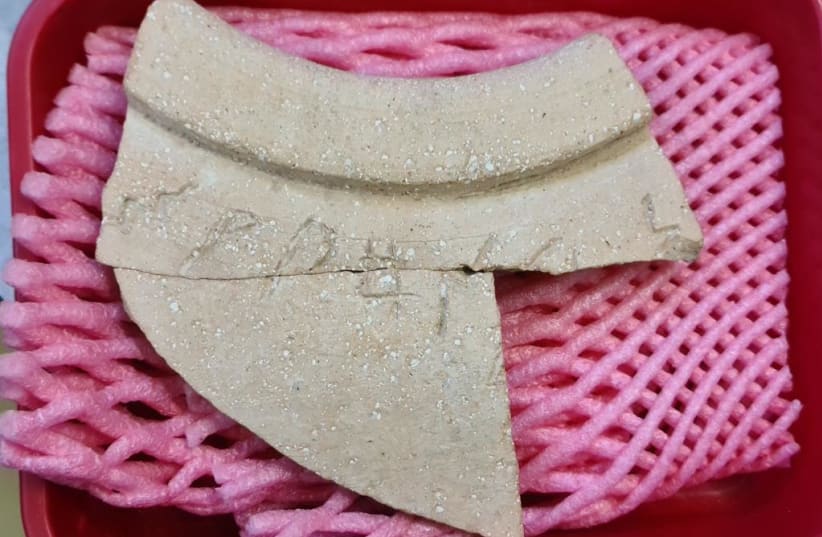The connection between King Solomon and the Queen of Sheba is controversial. Some claimed that he had a child with her, but according to rabbinical scholars, the story is believed to be an Ethiopian folktale, without any serious evidence.
However, the Bible’s First Book of Kings and the Second Book of Chronicles do document her visit to the king with gold, precious stones and camels carrying spices to test if he was as wise as reputed. According to these books, the queen was dazzled by his wisdom and majesty, as well as the Temple he had just recently completed. She praised both the king and Israel and went back home.
In a new study recently published in the journal of the Institute of Archaeology of the Hebrew University of Jerusalem – Jerusalem Journal of Archaeology, the Hebrew University of Jerusalem (HU) epigrapher Dr. Daniel Vainstub – who reconstructs, translates and dates inscriptions – was able to decipher an ancient South Arabian script used at the time in the southern Arabian Peninsula (present-day Yemen region) when the Kingdom of Sheba was the dominant kingdom.
Deciphering the ancient script for details on the Kingdom of Sheba
A large pottery jug and on the neck of the jugs was engraved an inscription that was partially preserved and dated to the time of Solomon by the late Dr. Eilat Mazar in excavations conducted in 2012 in the Ophel on behalf of the HU’s Institute of Archeology that she headed. The clay urn contained incense and was discovered fewer than 300 meters from the site of the Temple as part of the Ophel excavations in Jerusalem, demonstrating a link between King Solomon’s Israel and the Kingdom of Sheba, said the authors. The inscription was identified as having been written in the Canaanite script, a script from which the ancient Hebrew script that was used in the days of the First Temple developed.
“Deciphering the inscription on the urn teaches us not only about the presence of speakers of the language of Sheba in Israel during Solomon’s time, but also about the geopolitical relationship in our region. Mainly in light of the place where the urn was discovered, an area known for being the center of King Solomon’s administrative activity and Jerusalem,” noted Vainstub. “This is further evidence of the extensive commercial and cultural ties that existed between Israel under King Solomon and the Kingdom of Sheba.”
“This is further evidence of the extensive commercial and cultural ties that existed between Israel under King Solomon and the Kingdom of Sheba.”
Dr. Daniel Vainstub

The Shebaite language was spoken between about 1000 BCE and the 6th century CE by the people of the kingdom of Sheba and by several other peoples in the ancient civilization of the southern Arabian Peninsula. They used it as a written and not only a spoken language.
According to the new decipherment, the inscription on the urn is “Shi Ladananum 5” – the second of the four components of incense mentioned in the Torah (Exodus 3:34). This component, referred to in Jewish sources as a “clove” and in the Jerusalem Talmud and the Babylonian Talmud as a “fingernail,” was a necessary component of the incense that, according to the sources, was fired both in the first and second houses.
This finding points to a clear connection between the Jerusalem of the 10th century BCE (the days of the Kingdom of Solomon) and the Kingdom of Sheba, the team wrote. It seems that the pottery urn was made in the vicinity of Jerusalem and the inscription on it was engraved before it was put into the kiln for firing by a person from the town of Aita who was connected with the supply of incense.
The Ophel site in the archaeological garden at the foot of the Southern Wall, in the area of the national park surrounding the walls of Jerusalem, includes a route that passes between the 2000-year-old purification mikvaot (ritual baths) that were used by pilgrims to the Temple. The place also served as the administrative area of Solomon’s kingdom.
At the same time that the creation of the urn was dated, the kingdom of Sheba flourished, among other things, based on the cultivation and marketing of perfume and incense plants. Its capital city was Marib. The Shebaites developed advanced methods of dams and irrigation of fields growing the bushes from which they produced perfumes and incense ingredients. Their language was a south Semitic language. From the descriptions in the Bible, it can be understood that King Solomon controlled the trade routes in the Negev through which the Shebaite camel caravans passed, loaded with perfumes and incense plants, on their way to the Mediterranean ports for export.
The initial excavation led by Dr. Eilat Mazar was funded by Daniel Mintz and Meredith Berkman of New York, with assistance from Herbert W. Armstrong College in Oklahoma, USA, and the East Jerusalem Development Company.
